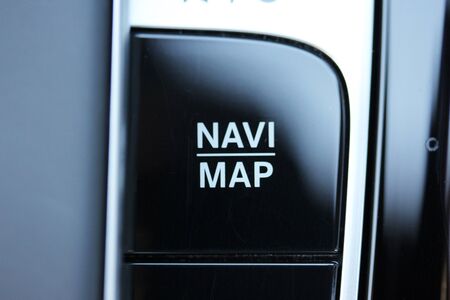1. Preparing for Weather Variability
When hitting the road, its important to be ready for unpredictable weather. Conditions can change quickly, so taking a few precautions can ensure a smoother and safer journey.
Check Weather Forecasts
Before starting your trip, check the weather forecast for your route. Use reliable weather apps or websites to stay informed about potential storms, extreme heat, or sudden temperature drops. If severe weather is expected, consider adjusting your plans or preparing alternate routes.
Pack Essential Gear
Packing the right gear can make a big difference in dealing with unexpected weather conditions. Here are some essentials to bring:
| Weather Condition | Essential Gear |
|---|---|
| Rainy or Stormy | Raincoat, waterproof boots, extra towels, and a tarp |
| Hot and Sunny | Sunscreen, sunglasses, a wide-brim hat, and plenty of water |
| Cold or Snowy | Blankets, warm clothing, an ice scraper, and tire chains |
| Windy | Secure loose items, check tire pressure, and wear wind-resistant clothing |
Ensure Your Vehicle is Ready
Your car should be in top shape to handle different weather conditions. Here’s a checklist to follow before your trip:
- Check your tires: Ensure they have proper tread depth and pressure for wet, dry, or icy roads.
- Inspect your wipers: Replace worn-out wiper blades to maintain visibility in rain or snow.
- Test your battery: Cold temperatures can weaken a battery, so make sure its in good condition.
- Fill up fluids: Keep your windshield washer fluid, coolant, and oil levels topped up.
- Emergency supplies: Have a flashlight, jumper cables, a first-aid kit, and food in case of breakdowns.
By staying prepared and proactive, you can handle sudden weather changes with confidence and keep your road trip smooth and enjoyable.
2. Driving in Rain and Wet Roads
Rainy conditions can make road trips more challenging due to reduced visibility and slippery surfaces. To stay safe while driving in the rain, its essential to adjust your driving habits accordingly.
Maintain Safe Following Distances
Wet roads increase stopping distances, making it crucial to leave extra space between your vehicle and the one in front of you. A good rule of thumb is to double the normal following distance in rainy weather.
Use Headlights Appropriately
Turning on your headlights in the rain improves visibility for both you and other drivers. Many states require headlights to be on when using windshield wipers. Avoid using high beams, as they can reflect off wet surfaces and reduce visibility.
Avoid Hydroplaning by Reducing Speed
Hydroplaning occurs when tires lose traction on wet surfaces, causing the vehicle to slide uncontrollably. To minimize the risk:
| Prevention Tip | Description |
|---|---|
| Reduce Speed | Driving slower allows tires to maintain better contact with the road. |
| Avoid Sudden Movements | Sudden steering or braking can lead to loss of control. Smooth movements are safer. |
| Check Tire Tread | Worn tires have less traction. Ensure your tires are in good condition before traveling. |
What to Do If You Hydroplane
If your vehicle starts to hydroplane, remain calm and take the following actions:
- Ease off the accelerator to allow the tires to regain traction.
- Steer gently in the direction you want to go.
- Avoid sudden braking or sharp turns.
By practicing these safety measures, you can navigate rainy conditions more effectively and reduce the risks associated with wet roads.
![]()
3. Handling Snow and Ice
Driving in snowy and icy conditions can be challenging, but with the right precautions, you can stay safe on the road. Follow these essential tips to navigate winter weather with confidence.
Use Winter Tires
When driving through snow and ice, having the right tires can make a significant difference. Winter tires provide better traction and grip, reducing the risk of slipping. Unlike all-season tires, they are designed with special tread patterns and rubber compounds that improve handling in cold conditions.
| Tire Type | Best Use |
|---|---|
| Winter Tires | Snow and ice-covered roads |
| All-Season Tires | Mild winter conditions |
| Summer Tires | Dry and warm roads |
Drive Cautiously
Reducing speed and increasing following distance are crucial when driving on snowy or icy roads. Sudden movements can cause your car to lose traction, so accelerate and brake gently. Keep an eye out for black ice, which can be almost invisible but extremely slippery.
Know How to Regain Control
If your car starts sliding, remain calm and follow these steps to regain control:
For Front-Wheel Skids
Ease off the gas and steer in the direction you want to go. Avoid sudden braking, as this can make the skid worse.
For Rear-Wheel Skids
Turn your steering wheel in the direction the rear of your car is sliding. Keep your foot off the accelerator and brakes until the car regains traction.
By preparing your vehicle and adjusting your driving habits, you can safely navigate winter conditions and enjoy your road trip without unnecessary risks.
4. Dealing with Fog and Low Visibility
Driving in foggy conditions can be challenging and dangerous if youre not prepared. Reduced visibility makes it harder to see other vehicles, road signs, and potential hazards. Here are some essential tips to help you drive safely through fog.
Use Fog Lights When Necessary
Fog lights are designed to help increase visibility in misty or foggy conditions. If your car is equipped with them, turn them on when visibility drops significantly. Regular high beams can actually make it harder to see because the light reflects off the fog, creating glare.
Reduce Speed
Since visibility is limited, lowering your speed is crucial. Driving too fast means you have less time to react to obstacles or sudden stops from other vehicles. Always adjust your speed based on how far ahead you can see. Here’s a simple guide for adjusting speed:
| Visibility Distance | Recommended Speed |
|---|---|
| Less than 100 feet | 20-25 mph |
| 100-200 feet | 30-40 mph |
| Over 200 feet | Adjust within speed limit |
Avoid Sudden Lane Changes
When driving in fog, stick to your lane as much as possible. Sudden lane changes can confuse other drivers and increase the risk of collisions. Use turn signals well in advance if you need to switch lanes, and always check your mirrors carefully.
Stay Focused and Minimize Distractions
Foggy conditions require full attention. Keep distractions to a minimum—avoid using your phone, adjusting the radio, or engaging in anything that takes your focus away from the road. Keep both hands on the wheel and stay alert for any unexpected obstacles.
5. Managing High Temperatures and Heatwaves
Driving in extreme heat can put a strain on both your vehicle and your body. High temperatures can cause engine overheating, dehydration, and even tire blowouts if youre not careful. To ensure a safe road trip, follow these essential tips.
Check Coolant Levels
Your vehicle’s cooling system is critical in preventing engine overheating. Before hitting the road, check the coolant levels and top them off if needed. If your trip involves hot climates, consider carrying an extra bottle of coolant just in case.
Key Coolant Checkpoints
| Checkpoint | Why Its Important |
|---|---|
| Coolant Level | Ensures engine remains at a safe temperature |
| Coolant Color | Should be bright green, orange, or pink—no rust or debris |
| Hoses & Radiator | Check for leaks or cracks that could lead to overheating |
Stay Hydrated
Hot weather can quickly lead to dehydration, causing fatigue and reduced focus while driving. Always keep a supply of water in your car, and take regular breaks to refresh yourself. Consider using a cooler to store extra bottles of water.
Hydration Tips for Drivers
- Drink water frequently, even if you don’t feel thirsty.
- Avoid excessive caffeine or alcohol, as they can cause dehydration.
- Keep electrolyte drinks handy for long drives to maintain energy levels.
Prevent Tire Blowouts
Higher temperatures cause air inside your tires to expand, increasing the risk of a blowout. Its crucial to check your tire pressure regularly and ensure its within the recommended range. Overinflated or underinflated tires can be dangerous, so adjust as needed.
Recommended Tire Maintenance
| Task | Frequency |
|---|---|
| Check Tire Pressure | Before each long drive |
| Inspect Tire Tread | Every 1,000 miles |
| Rotate Tires | Every 5,000-7,500 miles |
By keeping an eye on coolant levels, staying hydrated, and maintaining proper tire pressure, you can navigate through heatwaves safely and keep your road trip running smoothly.


